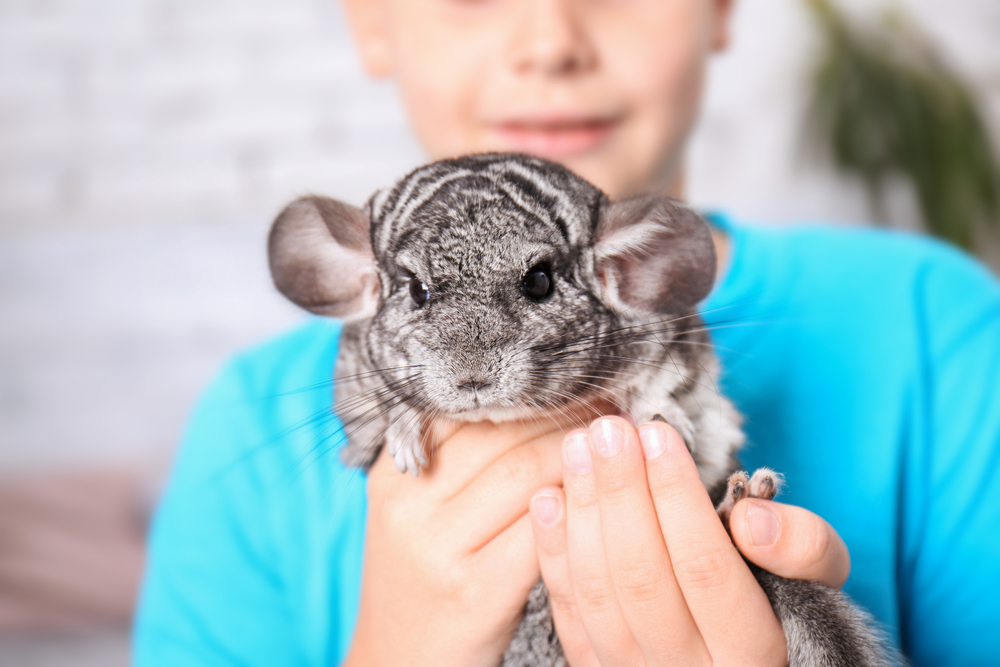Like it or not the world is pretty divided on exotic pets. Some people think they’re the best thing since sliced bread while to other people the thought of having a snake or a tarantula in your bedroom seems like the weirdest and scariest thing you could ever do. “But WHY?!” is one of the most common questions I get from the uninitiated.
I’ve been lucky over the years. My parents were understanding when I lived at home and all my past girlfriends have at least got used to being surrounded by a menagerie of exotic animals – a few even really getting into the hobby themselves. I still wonder about that ex of mine who bought the Sulcata tortoises while we were together – I’d love to see how they’re doing all these years later.
But not everyone is that lucky. I have spoken to many people over the years who long to keep some kind of exotic pet but someone they live with is so opposed to the possibility that it leads to frustration and arguments.
Therefore I thought it might be useful if you’re currently looking to get an exotic pet but are experiencing some friction to lay out some common arguments I’ve heard about keeping exotic pets and some potential answers for the nay-sayers. Hopefully these points on overcoming arguments about keeping exotic pets will come in handy and you will finally be able to keep that animal you’ve always wanted.
Contents
- 1 Exotic Pets Are Dangerous
- 2 Exotic Pets Are Scary
- 3 Exotic Pets Are Disgusting
- 4 Exotic Pets Might Escape
- 5 Exotic Pets Are Difficult To Keep
Exotic Pets Are Dangerous
There are, of course, potentially-deadly snakes, lizards and scorpions that some people keep in captivity. However in most parts of the world keeping deadly pets requires you to have an inspection of your home and to hold a license and insurance for the animals. You won’t even be able to buy these deadly species legally without first having a permit to show. So while some exotic pets are dangerous, you need to jump through a lot of hoops to keep one.
In contrast the type of exotic pet that you can get from a standard exotic pet store – leopard geckos, bearded dragons, praying mantis and the like – are regarded by the government as no more dangerous than any other type of pet. Indeed more injuries are caused each year by dogs than by any reptile or amphibian.

Now, truth be told, there can still be risks even if the species you choose isn’t covered by a dangerous wild animals license. For example iguanas can carry salmonella which can cause infections if you receive a bite. Terrapins (turtles) can also be a host for this parasite and of course larger reptiles like monitors or boa constrictors are capable of causing damage through their fangs, claws and tails.
But even a modicum of care will prevent you from essentially any risk whatsoever. If you are a beginner at keeping exotic pets then avoid starting off with a large species until you gain some experience. The most popular exotic pets are popular for a reason – they’re easy to care for, reasonably priced, easy to keep and – most importantly – docile and safe-enough for even a beginners to look after successfully.
Get to know your pet. Get it used to you. Learn how to handle it properly. And wash your hands before and after you handle your pet or any piece of equipment and you should be fine.
Remember – I’ve been keeping exotic pets for over 15 years now and have never suffered any kind of serious damage such as cuts, bites or infections as a result of keeping exotic pets. Follow a few common-sense rules and you’ll be safe as houses.
Exotic Pets Are Scary
What is the source of fear? Frankly, psychologists believe fear comes from ignorance. We dislike things that we don’t understand – things that are very different to ourselves. And by definition most exotic pets are pretty “different” when compared to a cat or a dog.
They lack fur. Some of them don’t blink. They eat odd things. They don’t move for hours on end. They can be scaly or slimy. And so on. So yes, I admit that’s pretty weird.
But exotic pets can also be tremendously fascinating. I have found over the years that friends of mine who initially could barely come into my house quickly start to become fascinated by my pets as they start to gain some knowledge and understanding about them.
I must admit that when I was a boy my late grandmother seemed more interested in how my lizard was than myself when she used to come round! Whenever she visited her first port of call was always to say hello to “Flotsam” – and that was from an elderly lady!
So yes, initially exotic pets may seem scary. But take the time to understand them a little better – and to get familiar with them – and you’ll normally find that the fear melts away into a sort of fascination.
The worst I’ve ever experienced after some patience is a girl who would at least put up with them and look at them from outside their cages. At the other end of the scale I have had girls who “hated” exotic pets eventually happily holding and feeding my pets once they got to know the animals a little better.
So if someone you know is scared of exotic pets, try getting to know other people who already have exotics so they can start to get to know some exotics and this little bit of knowledge and familiarity will often quickly resolve the subject of fear.
Exotic Pets Are Disgusting
Snakes eat dead mice. A treefrog will start eating a cricket while it’s still alive. A female praying mantis may eat the male during mating. Frogs are slimy. Tarantulas build webs. To many people this is the stuff of nightmares and exotic pets are seen as disgusting.
The fact is, though, that what you see in exotic pets is really just nature in tooth and claw. It’s what happens every day in nature and is perfectly normal – no matter how disgusting some people may find it.
There are two potential ways to deal with this argument against keeping exotic pets. The first is that your parents, wife, friend etc. doesn’t need to see your exotic pets all the time. You can do the “disgusting” bits like feeding your snake a warm, dead mouse while they’re out. By the time they get home it is “business as usual” and they never need see the “dark side” of keeping exotic pets.
Stress that you’ll never ask them to clean out or feed your exotic pet and that anything they find disgusting you’ll do while they are absent so they never have to see any of it.
The other option is that while some exotic pets are seen as disgusting, strangely there are a number of exotic that many people have few problems with. An example of such an animal might be a tortoise or a bearded dragon. Both look reasonably cute. Both eat a mainly vegetarian diet (no dead animals for dinner!). Both will get reasonably tame. Both can be handled.
So the alternative is to start off with an exotic pet that isn’t “disgusting” to get whoever has the problem used to having exotic pets around the house. Then as things settle down you can always consider trying to “up the bar” and introduce that other species you’ve always dreamed of keeping…
Exotic Pets Might Escape
Many people are absolutely fine with an exotic animal in a cage and will be fascinated to visit the reptile section at your local zoo. However the potential of having the same animals in your home sometimes makes some people break into a cold sweat as they imagine getting home from work to find an empty cage and a “deadly” (!) snake loose somewhere in the house.
The simple fact is that any animal will escape if it can – the trick is to make sure that your vivarium is safe and secure. Over the years I have had a number of exotic pets escape – though every single one has been caught again so I’ve never actually lost one.
Here is a list of the exotic pets that have escaped from their cages while in my care and what I did wrong:
Milk Snake – I simply didn’t put the lid on the cage properly so she managed to lift the lid off just enough to slither out. She was found easily resting on the windowsill above the radiator to keep warm.
Sailfin Dragon – This lizard escaped while I was working at the exotic pet store as a teenager. Quite simply I underestimated how quick he was and I opened the cage door too wide, allowing him to dodge my hand and run straight out of the open gap. He ran a reasonable distance up the store but we managed to beat him to the door and quickly secured him.
Curly Haired Tarantula – This was one of the first spiders I ever kept and he was a winy spiderling. I made the mistake of putting him in a cage with ventilation slits and underestimated just how small a gap he could squeeze through. He was found sitting peacefully on top of the cage.
Stout Legged Baboon – This was a spider that I imported from Africa and the exporter hadn’t properly secured the lid of the container before shipping. The spider therefore escaped from his plastic container but was safely tucked in a corner of the shipping container.
Iguana – This medium-sized iguana had more strength than I realized and managed to slide open the plastic door to his cage. He was found again on my windowsill above the heater.

While these five escapes may seem like a lot, remember that is in 15 years of keeping exotic pets and indeed all of these happened in the first few years of keeping exotics. Since I took the time to investigate why each had happened – and made plans to ensure they wouldn’t happen again – I haven’t had any issues with escaped exotic pets.
The general rules are as follows… If an exotic pet has an opportunity to scape from captivity it probably will. So firstly ensure there are no gaps or holes in the container you are keeping your pet in through which it can escape. Use simple cage-locks to ensure that sliding glass or plastic doors cannot be opened without you being present with the keys. Ensure lids are securely fitted and if necessary weigh them down with heavy objects such as books.
Take great care with fast-moving species. Close the door of the room in which you keep your exotic pet before opening the cage and if necessary take steps to control your pet. Examples of ways to do this include gently coaxing your pet into a plastic container so it can be safely removed or moving your pet from one container to another in the bath so that the slippery sides should keep your pet from escaping.
Follow these simple, common-sense rules and you really should have no problems with your exotic pet escaping.
Exotic Pets Are Difficult To Keep
In comparison to many pets, exotics are indeed rather more difficult to keep but there are so many different species of exotic pet that there is also a massive diversity in terms of the difficulty level in keeping them.
Most commonly-sold exotic pets like corn snakes, milk snakes, geckos and Chilean rose tarantulas are in fact quite simple to keep once you have their housing set up correctly. They require minimal maintenance and feeding and can in fact be quite simple to keep once you gain a degree of experience.
Don’t think exotic has to mean difficult – with the right information many species of exotic pet can be kept healthy and strong in captivity with the minimum of effort.
What have your experiences of dealing with people who dislike exotic pets? Did you get your own way? Are you still working on someone? What have you found that works? Are there any arguments you’ve come across that aren’t covered here? Why not leave me a comment below and let me know…




